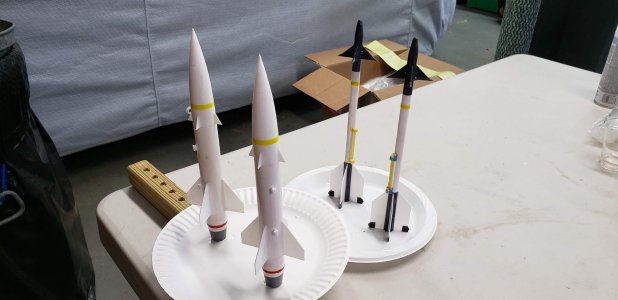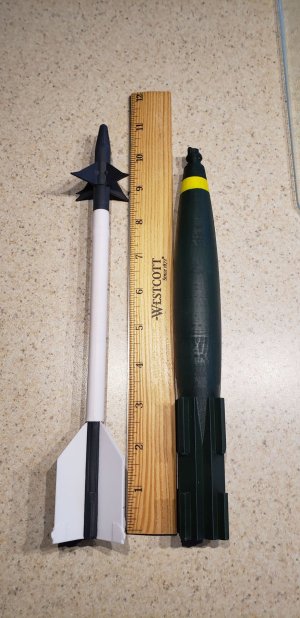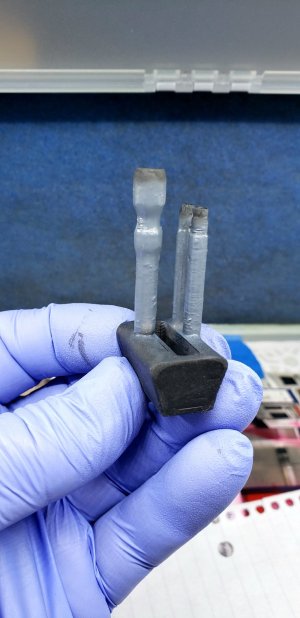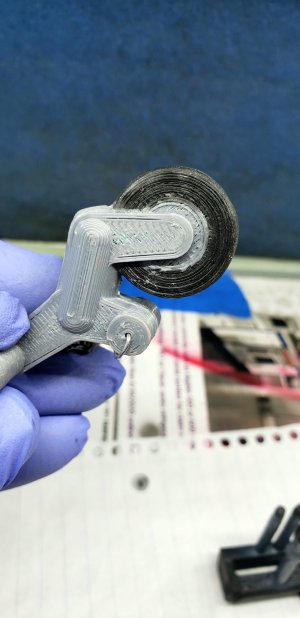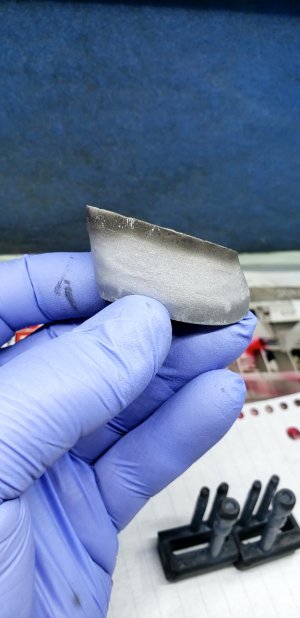Kim McCann
Mac-Valve Maestro!
I use mostly createx products, mostly wicked and illustration. Though I love them, I will say honestly, thinning and getting a good flow is a bit of a black art. Createx have astounding pigment load, but they can vary in thickness bottle to bottle, even with the same color, especially the wicked series, and also, what works well for one won't quite work for another person, and depending on the volume of air your particular brush moves, as well as the pressure you want to spray at, introduces even more variability. You'll need a bit of fiddling to zero in on what works for you.
Straight createx can be thinned by water BTW, but will take some extra time to dry. If you don't have a dedicated reducer available, you can mix 2 parts water, to one part each of glass cleaner and alcohol, and a drop or two of dish soap (2 or 3 drops pure gylcerin from the drug store skin section works even better). Mix it up in a bottle and use as needed.
When you are starting out, don't mix in your airbrush cup. You can do that later when you are more comfortable, but start mixing in other containers. I have a stack of little medicine cups from the dollar store that work perfect for this. Put your paint in, and then a drop of reducer at a time, until you get something slightly thicker than skim milk. Let it sit in the cup for about 5 minutes to even out and any reducer or water to do it's work.
Using a dropper, drop a couple of drops of you mix into your airbrush and do a couple of test sprays. See if you like the result and get a good flow.
If the paint breaks - i.e. you get sandy texture, or it runs, then it is too thin. add a drop of paint to your mix, mix it up and try again. If it doesn't flow nice, it is too thick, add a drop of your homemade reducer.
You will find that after a bit of back and forth you will find exactly what works for your style, pressure and airbrush. You'll start to know, just by sight what thickness works for you.
As you get more experienced, you will probably start to work closer, at lower pressures with thinner paint. The beauty of createx is that you can do this. You can thin it down to dirty water and still get reasonable coverage at low pressures, or move it super thick through big guns for quick coverage over a broad area. The downside of them, is that they take some getting used to in terms of thinning.
You might also want to consider stuff that sprays right out of the bottle when starting out. Golden high flow, and e'tac are pretty good for this.
I'd wait to use enamel until you are more comfortable, simply because of the long drying times between coats, and the cleanup. Also, the transport (solvents in the spray) are not the safest things to be breathing without an organic filter mask. Urethanes are also easier to learn on, but again, mask up.
In fact, any time you spray anything into the air, you should be wearing a mask. We only get one set of lungs, and it is a generally good idea not to be abusing them unnecessarily.
Createx can work well for models (I've done whole armies of warhammer 40k minis with them), they are tricky to get to grips with as a beginner. Worth the pain in the long run if you work through the mixing pains tho. That is true of any paint system however. There are always learning pains getting to grips with any system, and we all have different inclinations. What works for some won't work for another.
For now, mix in containers other than your airbrush's cup, start with some homemade reducer (recipe above), mix up a small cup of slightly thicker than skim milk color, and experiment, adding paint or reducer, until you get something that works, and figure out what consistency is in your comfort zone.
For plastic or metal models, best results come from multiple, very light coats with plenty of dry time between coats.
Straight createx can be thinned by water BTW, but will take some extra time to dry. If you don't have a dedicated reducer available, you can mix 2 parts water, to one part each of glass cleaner and alcohol, and a drop or two of dish soap (2 or 3 drops pure gylcerin from the drug store skin section works even better). Mix it up in a bottle and use as needed.
When you are starting out, don't mix in your airbrush cup. You can do that later when you are more comfortable, but start mixing in other containers. I have a stack of little medicine cups from the dollar store that work perfect for this. Put your paint in, and then a drop of reducer at a time, until you get something slightly thicker than skim milk. Let it sit in the cup for about 5 minutes to even out and any reducer or water to do it's work.
Using a dropper, drop a couple of drops of you mix into your airbrush and do a couple of test sprays. See if you like the result and get a good flow.
If the paint breaks - i.e. you get sandy texture, or it runs, then it is too thin. add a drop of paint to your mix, mix it up and try again. If it doesn't flow nice, it is too thick, add a drop of your homemade reducer.
You will find that after a bit of back and forth you will find exactly what works for your style, pressure and airbrush. You'll start to know, just by sight what thickness works for you.
As you get more experienced, you will probably start to work closer, at lower pressures with thinner paint. The beauty of createx is that you can do this. You can thin it down to dirty water and still get reasonable coverage at low pressures, or move it super thick through big guns for quick coverage over a broad area. The downside of them, is that they take some getting used to in terms of thinning.
You might also want to consider stuff that sprays right out of the bottle when starting out. Golden high flow, and e'tac are pretty good for this.
I'd wait to use enamel until you are more comfortable, simply because of the long drying times between coats, and the cleanup. Also, the transport (solvents in the spray) are not the safest things to be breathing without an organic filter mask. Urethanes are also easier to learn on, but again, mask up.
In fact, any time you spray anything into the air, you should be wearing a mask. We only get one set of lungs, and it is a generally good idea not to be abusing them unnecessarily.
Createx can work well for models (I've done whole armies of warhammer 40k minis with them), they are tricky to get to grips with as a beginner. Worth the pain in the long run if you work through the mixing pains tho. That is true of any paint system however. There are always learning pains getting to grips with any system, and we all have different inclinations. What works for some won't work for another.
For now, mix in containers other than your airbrush's cup, start with some homemade reducer (recipe above), mix up a small cup of slightly thicker than skim milk color, and experiment, adding paint or reducer, until you get something that works, and figure out what consistency is in your comfort zone.
For plastic or metal models, best results come from multiple, very light coats with plenty of dry time between coats.

